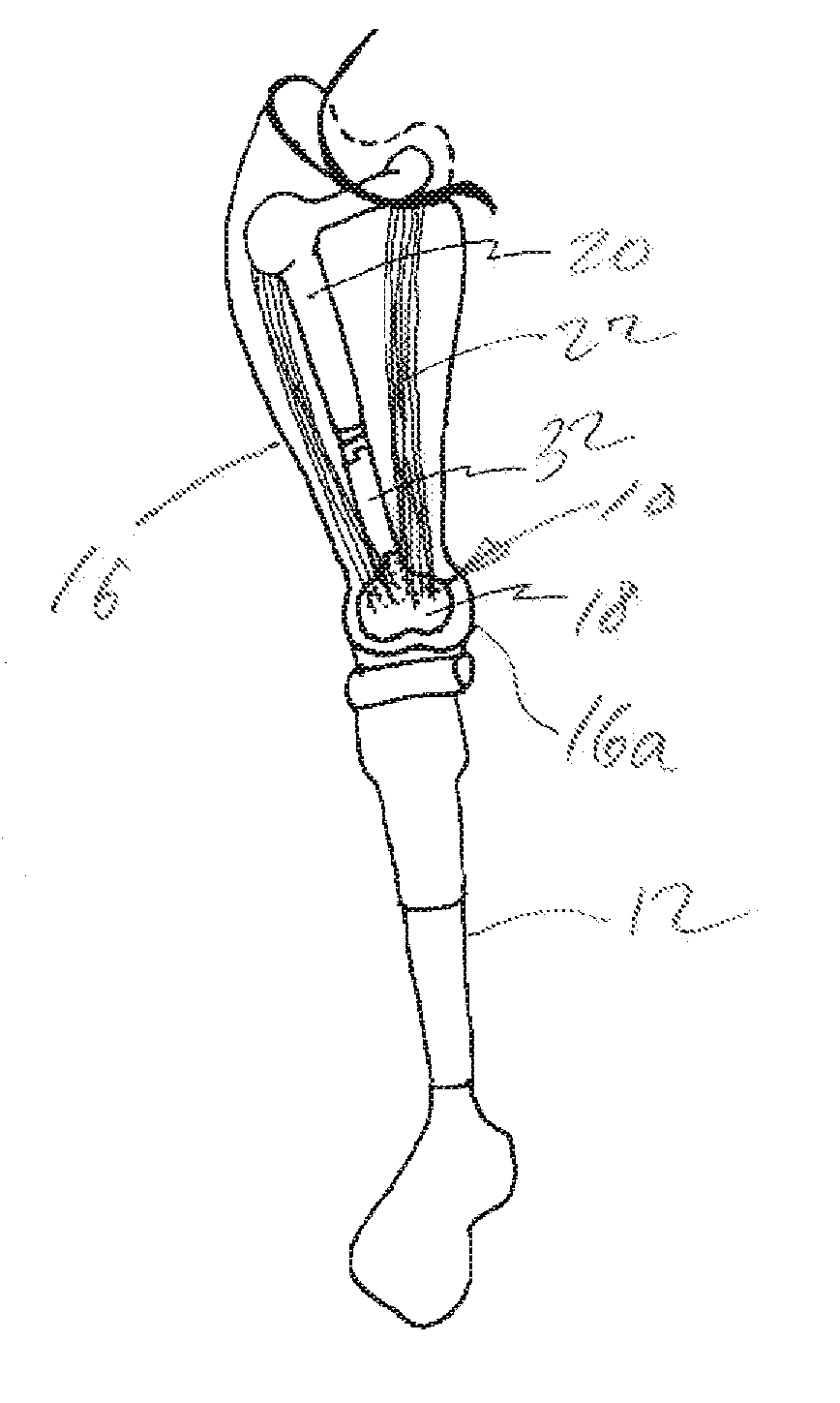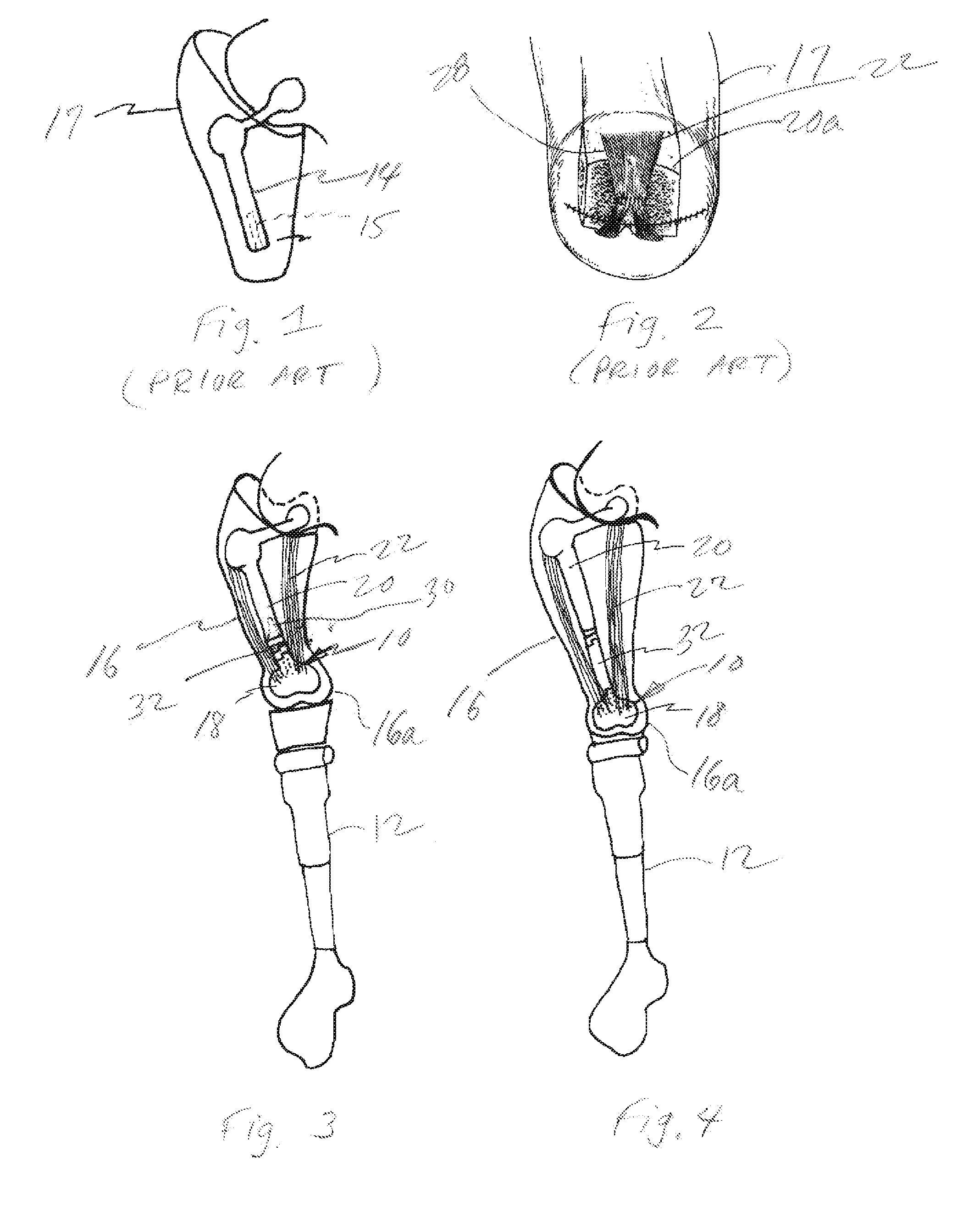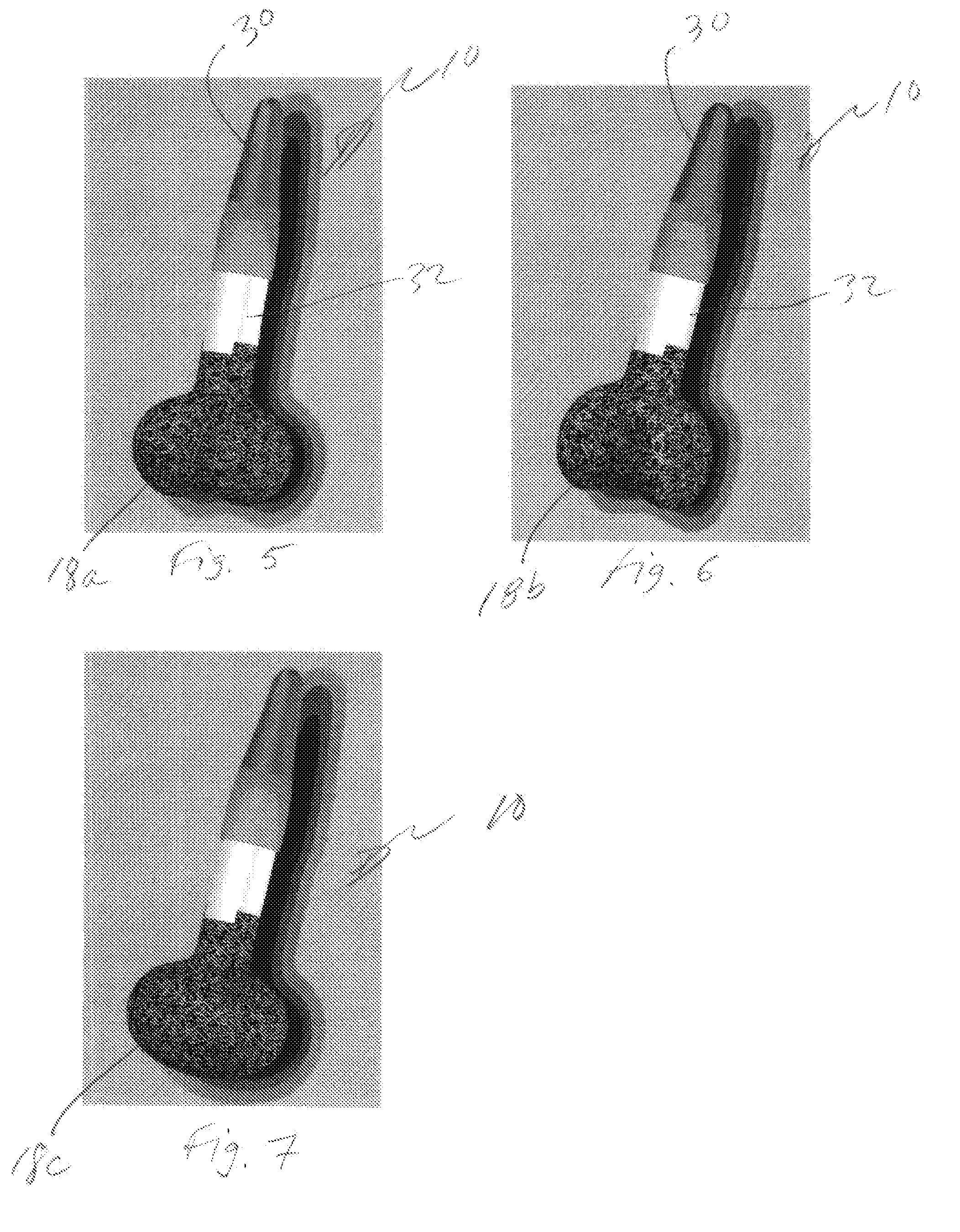Modular prosthetic implant for upper and lower extremity amputees
a prosthetic implant and module technology, applied in the field of surgical implanted prosthetic devices, can solve the problems of short residual cut bone length, lack of structural contribution of the cut bone to control the movement and function of the prosthesis, and lack of strength contribution from non-altered muscles
- Summary
- Abstract
- Description
- Claims
- Application Information
AI Technical Summary
Benefits of technology
Problems solved by technology
Method used
Image
Examples
Embodiment Construction
[0053] In accordance with the present invention, first referring to FIGS. 1-4, a new modular implant 10 and method for installing the same into a patient is provided for interfacing with an external prosthesis 12, such as that show in FIG. 8. The present invention provides a way to give back to cut bone trans-femural AK amputees the means to distally transfer mid-stride body weight that was lost at the time of amputation of their natural leg. While a cut end-bone 14 cannot directly bear weight, the novel surgically implanted prosthetic of the present invention create a lengthened residual limb 16 in accordance with the present invention and a condyle-like prosthetic platform, generally referred to as 18, for direct skeletal weight bearing. This represents a fundamental change and dynamic improvement in the connection between the residual limb 16 and the external prosthetic leg 12. A major secondary benefit is the opportunity to prosthetically extend the length of the residual femur ...
PUM
 Login to View More
Login to View More Abstract
Description
Claims
Application Information
 Login to View More
Login to View More - R&D
- Intellectual Property
- Life Sciences
- Materials
- Tech Scout
- Unparalleled Data Quality
- Higher Quality Content
- 60% Fewer Hallucinations
Browse by: Latest US Patents, China's latest patents, Technical Efficacy Thesaurus, Application Domain, Technology Topic, Popular Technical Reports.
© 2025 PatSnap. All rights reserved.Legal|Privacy policy|Modern Slavery Act Transparency Statement|Sitemap|About US| Contact US: help@patsnap.com



